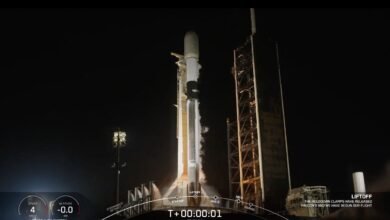Aurora alert — possible geomagnetic storm could spark northern lights as far south as Illinois and Oregon

Aurora chasers get those cameras on charge!
Due to heightened solar activity, the National Oceanic and Atmospheric Administration (NOAA) Space Weather Prediction Center has issued a geomagnetic storm warning for Oct. 3 through to Oct.5.
This is great news for those wishing to see the northern lights because if the predicted G3 conditions are reached we could witness auroras deep into mid-latitudes (around 50°) and as far south as Illinois and Oregon.
The culprit? A large plume of plasma and magnetic field known as a coronal mass ejection (CME) fired off from the sun during a recent explosive X-class solar flare on Oct. 1.
When CMEs interact with Earth’s magnetosphere, they bring electrically charged particles called ions that collide with Earth’s magnetic field. These collisions can spark geomagnetic storms. During such storms, ions slam into atmospheric gases, releasing energy that appears as light. This phenomenon is observed as the northern lights, or aurora borealis, in the Northern Hemisphere, and the southern lights, or aurora australis, in the Southern Hemisphere.

Geomagnetic storms are classified by NOAA using a G-scale to measure the intensity of geomagnetic storms. They range from G5, the most extreme class to G1 minor class storms. The recent geomagnetic storm watch issued by NOAA is currently classified as a G1 to G3 class.
When will the geomagnetic storm occur?
Current forecasts predict possible G3 conditions between Oct. 3 and Oct. 5. Check out NOAA’s 3-day forecast for the latest timings.
But remember, space weather is similar to Earth’s weather in that it is unpredictable and challenging to forecast. While geomagnetic storm warnings of this level are uncommon, they can still sometimes fizzle to nothing.
If you’re interested in tracking space weather and knowing when and where to spot auroras, I suggest downloading a space weather app that provides forecasts based on your location. One option I use is “My Aurora Forecast & Alerts,” available for both iOS and Android. However, any similar app should work well. I also use the “Space Weather Live” app, which is available on iOS and Android, to get a deeper understanding of whether the current space weather conditions are favorable for aurora sightings.
Source link



